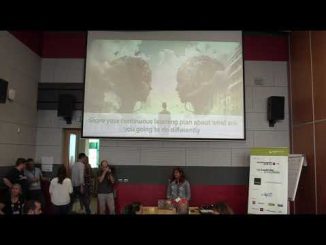Agile change and transformation
In recent years, project-based learning (PBL) has become increasingly popular at universities as an engaging approach that emphasizes student collaboration, engagement, and practical application of knowledge. Academic institutions aiming to prepare their students for modern workforce challenges often integrate agile methodologies like Scrum into PBL frameworks in order to enrich the educational experience for their students.
Education demands are constantly shifting, making student life increasingly complex. They face numerous hurdles from managing heavy workloads to working on group projects.
The presenter has found that many Scrum teams and Agile organizations are doing agile practices but don’t get much out of it, because they don’t fully understand the principles it is built on.
After having prototyped and implemented Agility at team level, many organizations particularly focus on scaling the experience at enterprise level. While there is an agreement that Agile is an effective approach for complex systems, we tend to paradoxically define Agile scaling models as if organizations were simple predictable systems, manageable by fixed frameworks.
In today’s fast-paced business world, agility has become a buzzword everyone discusses. But what does agile mean, and how can we use it to drive project success? This article will explore the concept of continuous improvement in agile methodologies and how it can help teams achieve better results.
The idea of change scares a lot of people! The thought of being uncomfortable in a new environment freaks us out and results in us being unable to adapt. Like IQ and EQ, we need to understand the Adaptability Quotient, or AQ, to succeed in our Agile life.
In today’s rapidly evolving business landscape, organizations are increasingly turning to artificial intelligence (AI) to gain a competitive edge. AI has the potential to revolutionize industries by automating processes, analyzing large volumes of data, and delivering valuable insights.








